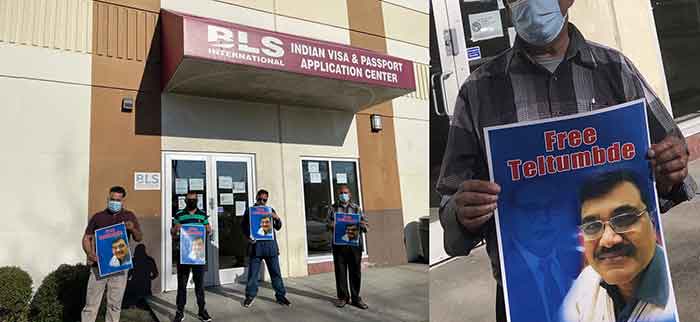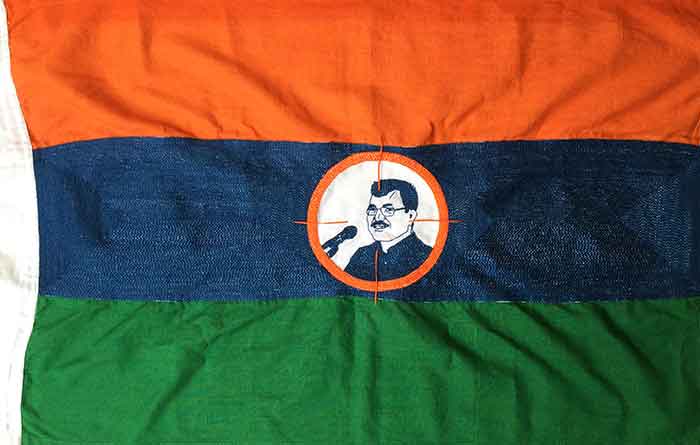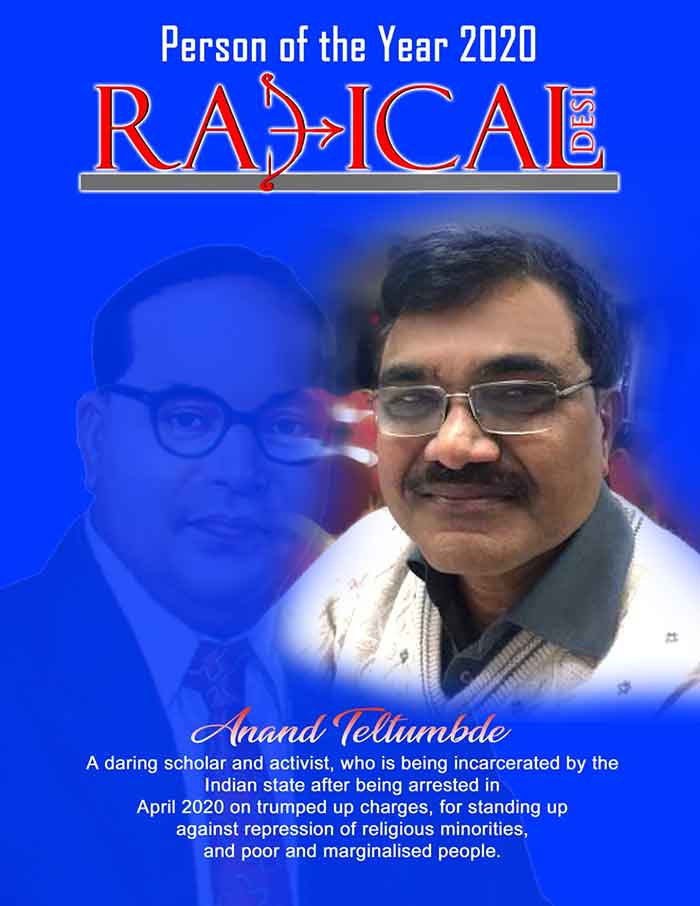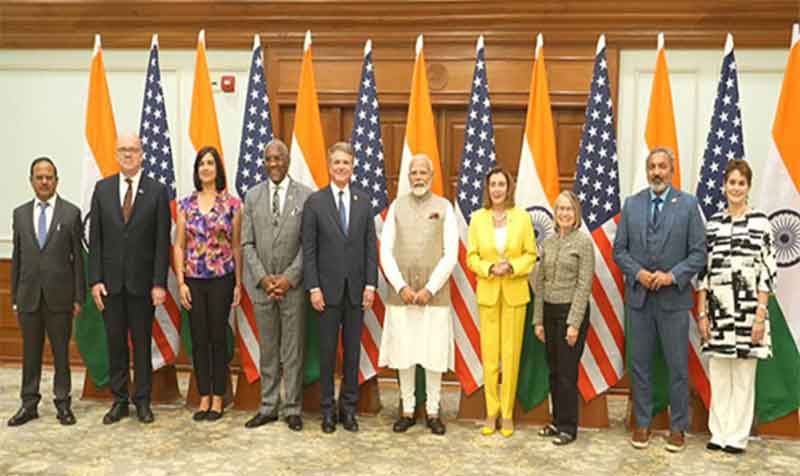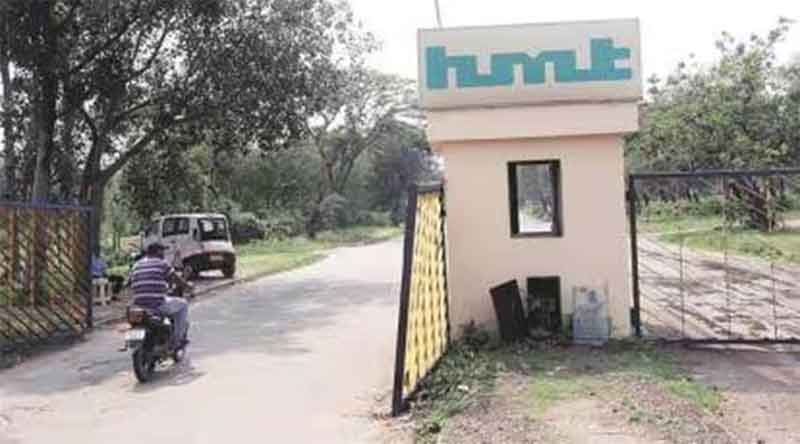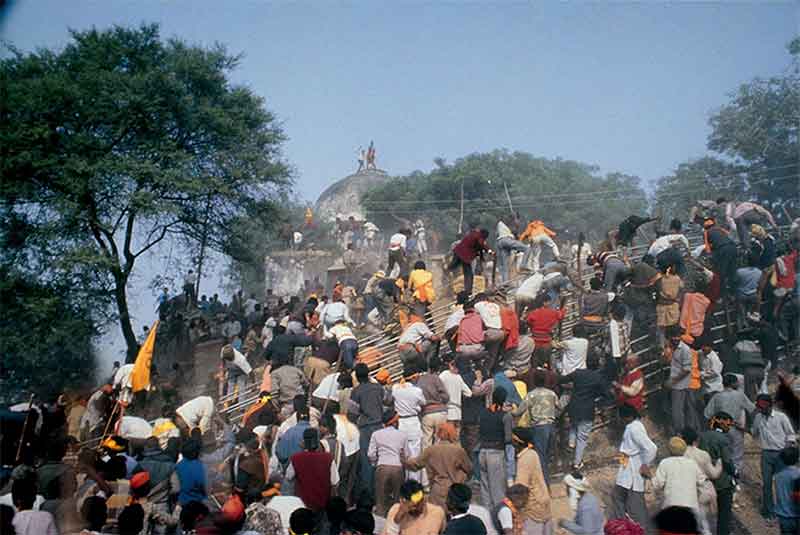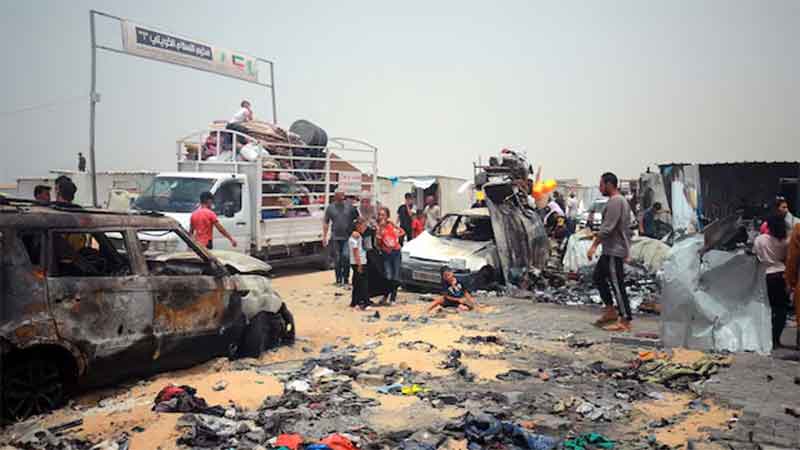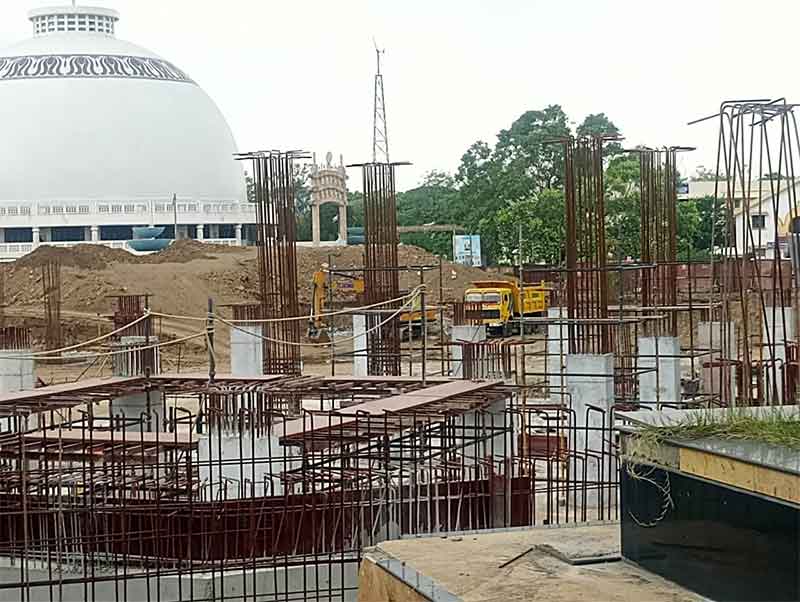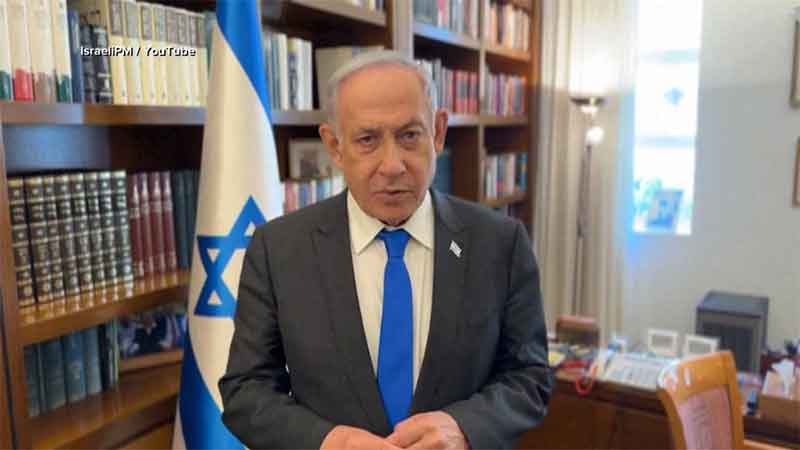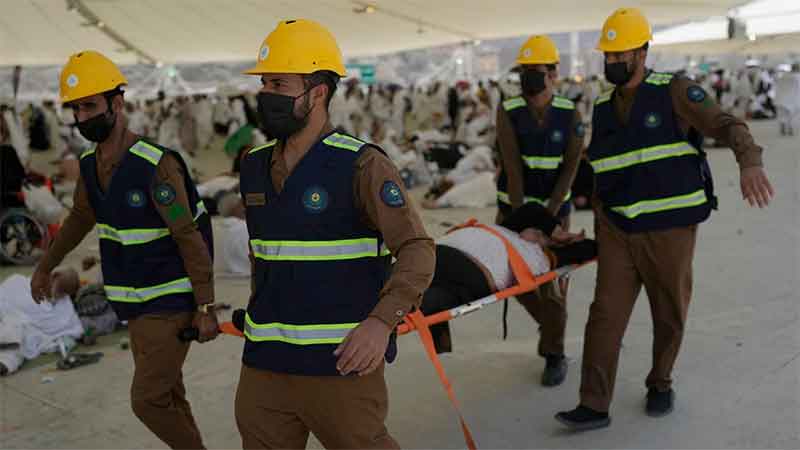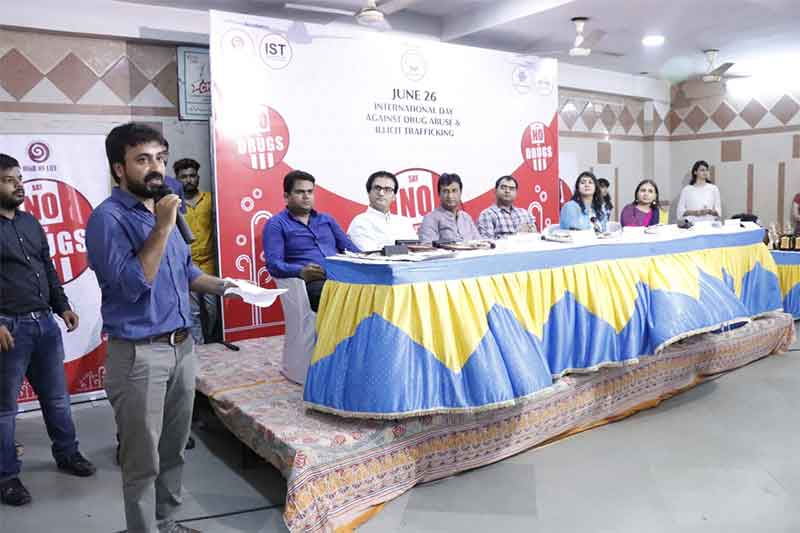Anand Teltumbde in conversation with Vidya Bhushan Rawat
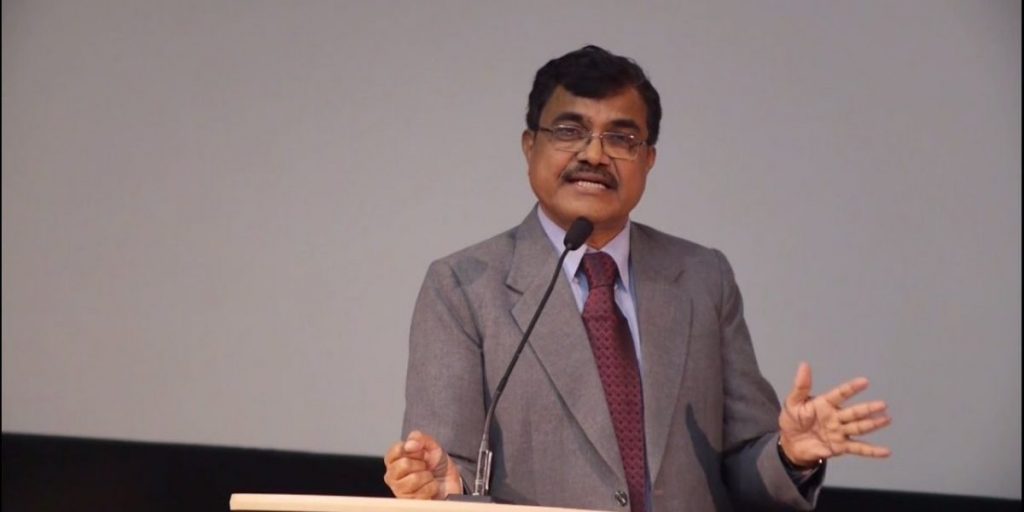
“ Sangh Parivar has not begun using Babashaeb Ambedkar today. It started way back in 1980s. Initially, Ambedkar was an anathema to it because of his utterances against its Hindu religion… But when Deoras, the lowest profile Sarsanghchalak, took over the RSS, he gave a clear strategic direction…It was during his period that Babasaheb Ambedkar was included in the list of pratah smaraniyas (the ones to be remembered at the dawn), ” said Anand Teltumbde. And added : “The bout of bhakti Modi expresses for him just illustrates it starkly.”
Dr. Anand Teltumbde , now in jail, in a well-articulated, long conversation, published in countercurrents.org , on April 21, 2017, with Vidya Bhushan Rawat candidly discussed various aspects of Ambedkarite-left politics, how Ambedkar is being appropriated by the ruling classes, and he also suggested a way forward.
It is worth recalling on the death anniversary of Dr. BR Ambedkar.
Excerpts follow. Emphases added:
To say that the Ambedkarite movement today is in lamentable state may be a grossly understatement. What we see going in its name is the exhibition of identities, Ambedkar himself having become an inert icon supplying that identity; rampant opportunism, everybody floating a shop for political brokerage in the name of devotion to Ambedkar; ideological bankruptcy, openly joining enemy camps for pelf and power but claiming to serve Ambedkarite cause; explosion of scholars rewriting what Ambedkar wrote or showering empty superlatives over him; toeing the lines of power that be for self-aggrandizement; and indulgence in never ending mutilation of what Ambedkar stood for. There are other strands of these to be seen in social media—outpourings on Facebook, whatsapp groups, and such others, with a new tribe of activists thriving in virtual space.
After his death in 1956, the movement experienced sudden vacuum of leadership as there was no leader who could take his place. But the leaders had huge personal ambitions. According to J V Pawar, who chronicled the significant events around the time, right after his cremation at the Chaitya Bhumi, the politicking among the Maharashtrian Scheduled Caste Federation (SCF) leaders had begun.
In his later years, Ambedkar was getting increasingly frustrated as the things he did his entire life, did not seem to produce desired result. In one of such bouts of frustration, he lamented to the Marathwada unit of the SCF that visited him at his residence in Delhi in 1953 that whatever he did had benefitted only a small section of the urban educated Dalits and that he could not do anything for the vast majority of Dalits in rural area. He wondered to the leader of the unit, B S Waghmare, whether he would be able to organize a struggle for demanding land for the rural Dalits….
The RPI, deformed at the birth itself, would not survive thereafter but for in the name claimed by innumerable factions..the Dalit Panthers sent a shock wave across the ruling establishment. But before it could set its tone through some militant action, it split on the point of deviating from Ambedkarism. …Dalit Panthers thus just proved to be a flash in pan. Dalit Panthers went the RPI way, with much rapid degeneration than the latter. ..
In the crowd of these fraudsters the nostalgic Dalit masses were increasingly drawn towards Ambedkar icon which in turn was exploited by the ruling classes in subtly deforming Ambedkar….
The gullible Dalit masses would not understand the stratagem of the ruling classes and would increasingly fall for it, setting in a vicious cycle. What remains now of the Ambedkarite movement is these statutes of Ambedkar, Buddha Vihars, congregations in his memories, hymns and identity hysteria…
Indian elections are fought on the strength of money, muscle and communal power, all of which are evil. Without resorting to these evil, no party would really survive in India….the BSP also achieved electoral success. The pertinent question to be asked here is whether they could really do justice to their professed goals. What remains of these parties is a different hue of the ruling class parties. They have enriched their leaders but have kept their constituency vulnerable…
But as the BSP experiment amply proved, you cannot defy the grammar of this politics. Money, muscle, communal arithmetic drives you away from the masses into the so called mainstream rendering you indistinguishable from any other ruling class party…
As a matter of fact, neither Ambedkar nor his party could succeed in post-colonial elections.
Today despite these caste struggles, arguably, India is more casteized than it was ever in history. Class struggle is the prime mover of the history and cannot be contrasted to any other struggle. It does not mean only economic struggle as the ignoramuses made it to be. They subsume all other struggles. In India class struggle necessarily incorporates anti-caste struggle. There cannot be a separate front where castes can be fought against. This has been historical folly in India…
Yes, there is big hurdle in the path. The mushrooming middle class of Dalits represent that hurdle. They do not want it. They have whipped up the identity obsession among the Dalits and made Ambedkar a marker of that identity. They will naturally prevent it happening. The class characteristics of these Dalits tend to prefer the status quo because it has brought them some stature and material prosperity. They would not want it change. Revolution moreover demands sacrifices, which has not been in their grammar. But that is not the case with the multitude of the Dalit masses. Their condition craves for change. They do not have anything left to lose but their pitiable condition. And therefore they would like to have a revolution. The only problem they do not know what it would be like, what it would entail.
Over time there has been promotion of this icon by the state and he is made what he is today. When India became independent, the ruling classes had adopted Gandhi as their icon. He remained for initial decades the state icon but with the change in times began losing its luster. It outlived its utility by 1980s… The ruling classes needed to replace it. Ambedkar, who historically contrasted Gandhi and presented his antithesis, came handy as an icon for the neoliberal India, which was considered as the antithesis of the welfare state during the Gandhian phase.
It is therefore that they began projecting him as the free market economist, pro-globalization figure, a monetarist and what not , particularly through some of the Dalit brokers masquerading as intellectuals.
The role of the state in making up the Ambedkar icon cannot be missed. Apart from monumentalizing efforts, it opened up Ambedkar centers everywhere. There was a sudden spurt in so called research on him in universities. Ambedkar, almost an abhorrent figure for the elite, suddenly became venerable.
Ambedkar’s modern look combined with liberal and pragmatic views came to perfectly fit in the requirements of the new icon for neoliberal era.
Why should he be demeaned to the mean status of just being a Dalit icon? I am also against this iconization business. Icons, on the positive side, can inspire certain ideals but on the negative side they can also distort the reality. The very concept of icon distances it from the reality and makes it objectionable.
Ambedkar need not be an icon for anyone but should be seriously considered for what he has to offer for the creation of the new world based on ‘liberty, equality and fraternity’ as he proclaimed…One needs to mind, however, that they are simultaneously limited by their own space and time…
I have already explained that unless Dalits adopt class orientation, they are not going to be successful even in their anti-caste struggle. To have class-approach does not make one automatically communist or Marxist, least the adherent of some political outfit. That is the only approach that could bind all oppressed people together and bring in a hope of annihilation of castes….
Yes, I have associated myself with many land struggles wherever I could and tried to help them as per my capacity. Land is a scarce resource and constituted terrain for class struggle between rich and poor….By Ambedkarite definition, they all become Left struggles but are not necessarily waged by the ideological Left. I haven’t seen any Ambedkarite spearheading these struggles. The honourable exceptions were Valjibhai Patel and Jignesh Mewani in Gujarat, who have been struggling to get physical possession of the lands allotted to the Dalits by the Gujarat government in 1980s…
Elsewhere, they came in caste conflict with others, not necessarily with the high castes but the likes of Adivasis and BCs… There is this clear divide between the masses of Dalits and their middle classes that surfaces in every struggle and particularly the land struggles.
The Dalit activists leading the land struggle invariably did it under the banner of Babasaheb Ambedkar but could not impress the so called Ambedkarites and deserve their support. They rather criticized them. When it came to resisting the states’ or state-sponsored land grab, Ambedkarites are conspicuous by their absence. There are hundreds of such resistance movements going on all over the country and they are mainly waged by the Dalits and Adivasis but one may not meet any Ambedkarite there. They are only supported by the Left activists.
Take for instance the anti-Posco struggle that endured all kinds of state repression but eventually compelled the giant company to wind up their plans. All of them were Adivasis and Dalits. Where was the Ambedkarites there? Has any Ambedkarite scholar considered it important to write on and at least express his moral support? The Ambedkarites rather have tendentiously sided by the state.
When the movements are built on sectarian identities, then it becomes problematic. Take for example, the Dalit struggle against castes. It appears that Dalit as an identity is viable. But on a careful consideration it is not. Because the caste oppression of the Dalits stems from caste ideology, which is pervasive, without annihilation of which the former cannot be ended. It is therefore Babasaheb Ambedkar had thought of annihilation of caste and necessarily graduated to a universal goal of achieving ideal society.
Caste as an identity has another serious problem. The core characteristic of caste is hierarchy; caste always seeks hierarchy and hence tends to split. We see, Ambedkar’s Dalit also split into its sub-castes. These sub-castes may have their own sub-subcastes. With such an identity, you cannot imagine to build a viable struggle for emancipatory goal.
Jotiba Phule had conceived shudra-atishudra identity; Kanshiram tried Bahujan as the identity. The problem with them was that they were based on castes and hence they collapsed. When identity is made to serve as the basis of politics, it always becomes sectarian as we observe. With this you can build your empire, you cannot emancipate…
But just consider, notwithstanding the eventual reversals of the class based struggles that brought about revolutions in the last century, which indirectly induced many progressive changes in the world, the identity movements could not even make a dent to their oppression.
Even Babasaheb Ambedkar who had stressed that the movement of Dalits could and should only be led by the Dalits and permanently dislodged Vittha Ramji Shinde, who had considerable following among Dalits from leadership, also willed ( later on) that larger society should own up the task of reforms. His ILP strategy and the last RPI strategy also could be construed to do away with the constricted identity of caste. Whence this identity obsession is developed among the Ambedkarites is really difficult to understand.
Sangh Parivar has not begun using Babashaeb Ambedkar today. It started way back in 1980s. Initially, Ambedkar was an anathema to it because of his utterances against its Hindu religion.. But when Deoras, the lowest profile Sarsanghchalak, took over the RSS, he gave a clear strategic direction. He clearly knew that in order to accomplish their objective they could not remain away from the constitutional structure. It was important to appeal to as many communities as possible. It was during his period that Babasaheb Ambedkar was included in the list of pratah smaraniyas (the ones to be remembered at the dawn). They slowly supplemented it with their saffronizing drive. They launched Samajik Samrasata Manch. Huge literature was produced and disseminated among the Dalits to show Ambedkar as friends with Hedgewar, praise of the RSS, the greatest benefactor of hindutva, and against the Muslims, etc. They had already started their work among the Adivasis to hinduize them. The non-Ambedkarite Dalits were already with them. Now it was the turn of the Ambedkarite Dalits!
He actually spoke out his mind in the Rajya Sabha when on 2 September 1953 he retorted to the charge that he was the architect of the constitution, by saying, “My answer is, I was a hack. What I was asked to do, I did much against my will. …. Sir, my friends tell me that I have made the Constitution. But I am quite prepared to say that I shall be the first person to burn it out. I do not want it. It does not suit anybody….” Unfortunately, later he patched up the statement by analogizing the Constitution as a temple that needed to be destroyed as the demons took its possession before the gods could be installed.
SIGN UP FOR COUNTERCURRENTS DAILY NEWSLETTER



